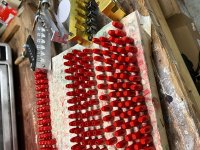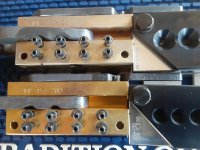DeplorabusUnum
Member
Bought my first hollow point mold recently. I went with MP molds because of the good things I've read about them. I powder coat everything so I picked one with no lube grooves. It's a .356 147 grain RNFP/RNHP combination, depending on which pins you use.
I'm super impressed with the mold. The pins slide smoothly in and out. No sticking or binding on opening and closing the mold. For the first time in use, I'm pleased with how they turned out. I'd recommend this company if you're looking for one.
Also tried out a new Lee 45 round nose mold to try to find a cast bullet that cycles well in my 1911. I've had nothing but good results from Lee molds as well, plus the price is right. Now just gotta load 'em and shoot 'em.

I'm super impressed with the mold. The pins slide smoothly in and out. No sticking or binding on opening and closing the mold. For the first time in use, I'm pleased with how they turned out. I'd recommend this company if you're looking for one.
Also tried out a new Lee 45 round nose mold to try to find a cast bullet that cycles well in my 1911. I've had nothing but good results from Lee molds as well, plus the price is right. Now just gotta load 'em and shoot 'em.














